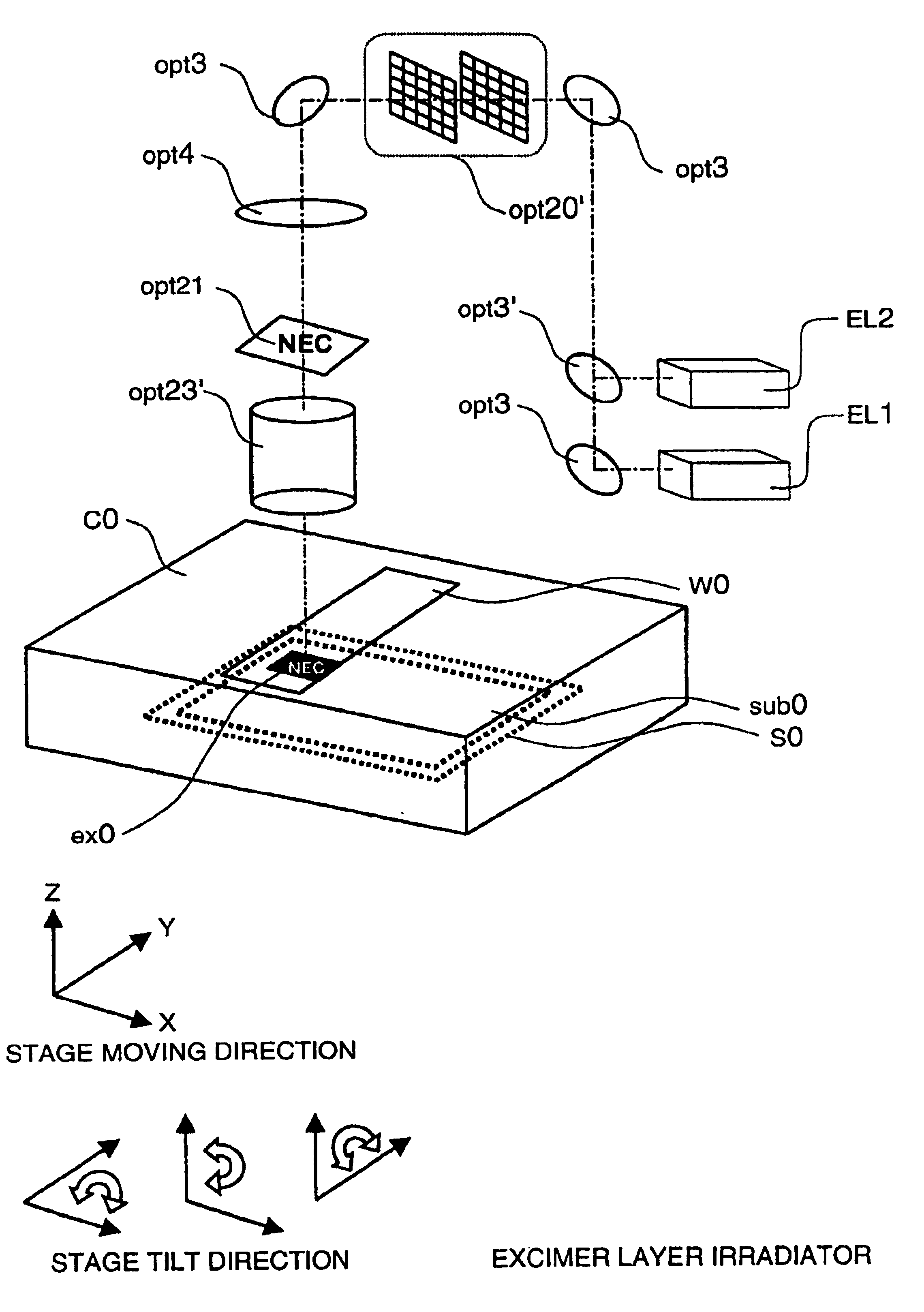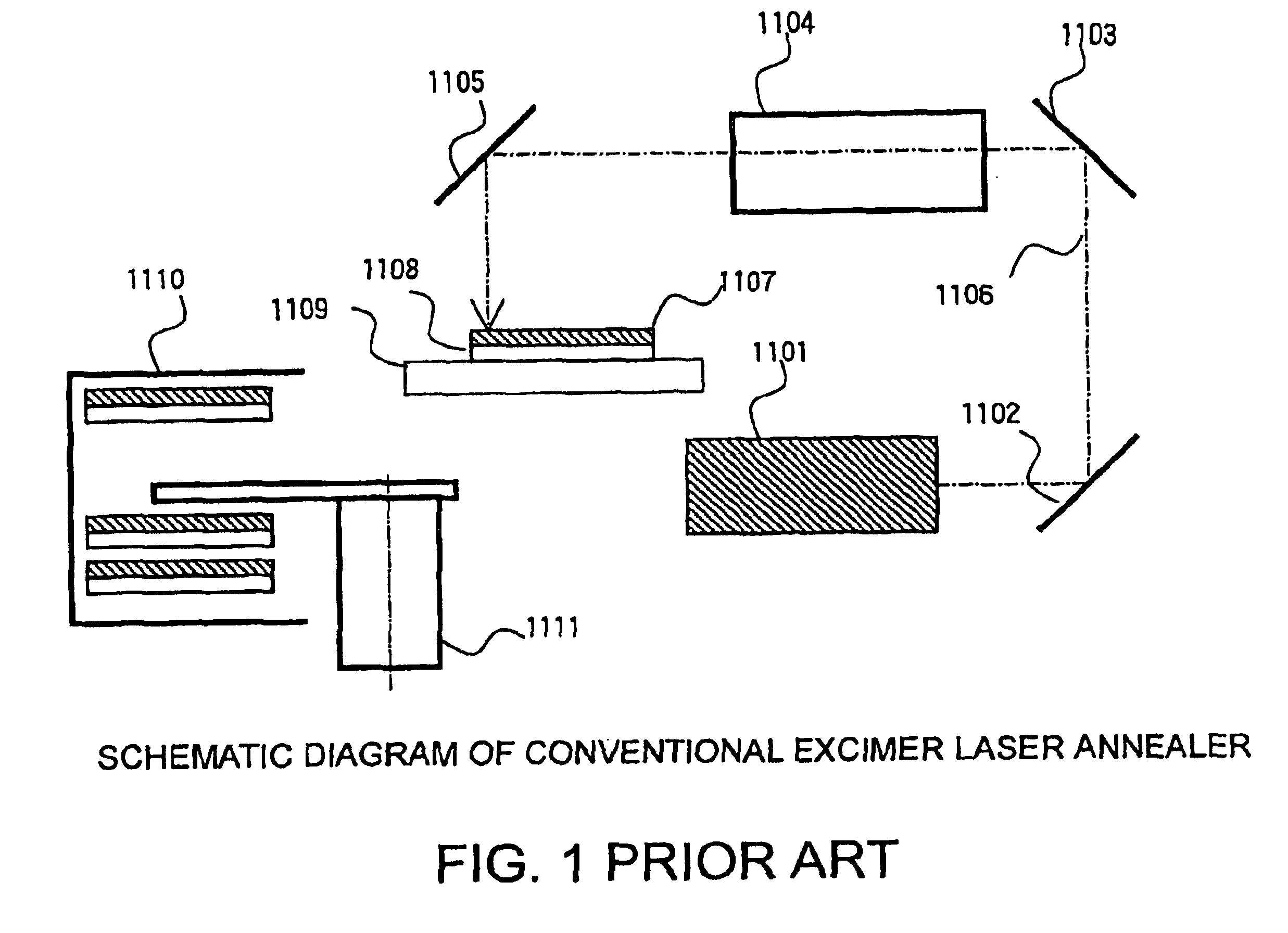System for the formation of a silicon thin film and a semiconductor-insulating film interface
a technology of semiconductor insulation film and silicon thin film, which is applied in the field of system for the formation of silicon thin film and semiconductor insulation film interface, can solve the problems that the connection pitch of the tab connection or the wire bonding method cannot be significantly reduced, the characteristics of the polycrystalline silicon thin film transistor cannot be satisfactorily uniform, etc., to achieve satisfactory semiconductor insulation film interface and reduce plasma damage
- Summary
- Abstract
- Description
- Claims
- Application Information
AI Technical Summary
Benefits of technology
Problems solved by technology
Method used
Image
Examples
first embodiment
Next, the CVD system according to the invention will be illustrated with reference to FIGS. 36 and 37. In the CVD system shown in FIG. 36, a silicon oxide film as a gate insulating film is formed on a conventional TFT glass substrate 7111, using, preferably, silane as a material gas. A casing 7112 of the CVD system is a vacuum casing, and the inside of the casing is maintained at a desired degree of vacuum during film forming operation by action of an evacuating mechanism 7113. The evacuating mechanism 7113 is connected to an evacuating port 7112b-1 formed in the vacuum casing 7112.
The vacuum casing 7112 houses a partition 7114 at the midpoint in a vertical direction. The partition 7114 is composed of a conductive material and is arranged in a nearly horizontal position, and has, for example, a square plane shape. The periphery of the partition 7114 is in contact with a peripheral wall of the vacuum casing 7112. The partition 7114 serves to separate the inside of the vacuum casing 7...
second embodiment
this type of system will be described below. The system according to the second embodiment is characterized in that a laser annealing process and a gate insulating film forming process can be continuously performed in vacuo. These processes are required for the production of a TFT-LCD using a polysilicon film as a channel layer. In the system according to the second embodiment, the transfer chamber 8103 also includes the pressure regulating gas inlet system 8132, and the inside of the transfer chamber 8103 is held at a pressure that is a vacuum pressure but is higher than 1 Pa and lower than that in the film forming chamber 8101. The pressure regulating gas inlet system 8132 brings a hydrogen gas into the transfer chamber 8103 as mentioned above.
According to the second embodiment, the surface of the substrate 8109 is modified by supplying a modifier after the annealing process. This configuration plays a very important role to improve the operating characteristics of the resulting T...
PUM
| Property | Measurement | Unit |
|---|---|---|
| temperature | aaaaa | aaaaa |
| temperatures | aaaaa | aaaaa |
| size | aaaaa | aaaaa |
Abstract
Description
Claims
Application Information
 Login to View More
Login to View More - R&D
- Intellectual Property
- Life Sciences
- Materials
- Tech Scout
- Unparalleled Data Quality
- Higher Quality Content
- 60% Fewer Hallucinations
Browse by: Latest US Patents, China's latest patents, Technical Efficacy Thesaurus, Application Domain, Technology Topic, Popular Technical Reports.
© 2025 PatSnap. All rights reserved.Legal|Privacy policy|Modern Slavery Act Transparency Statement|Sitemap|About US| Contact US: help@patsnap.com



